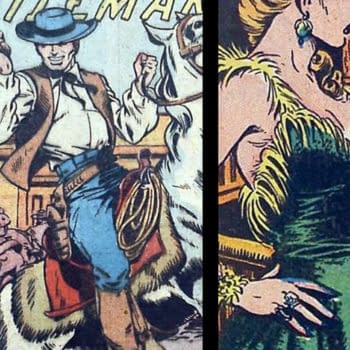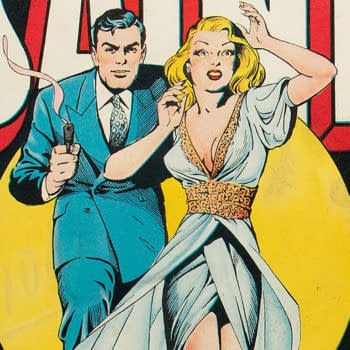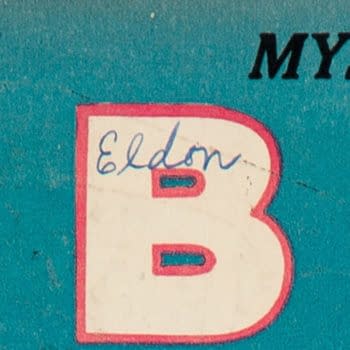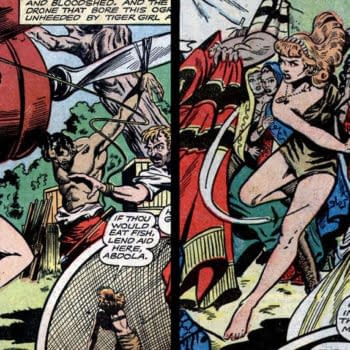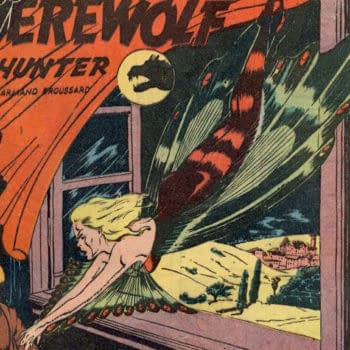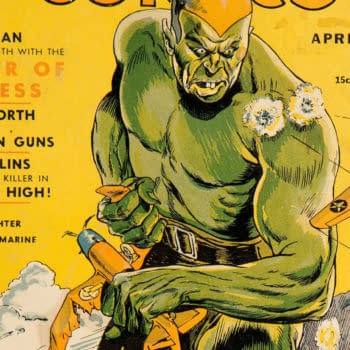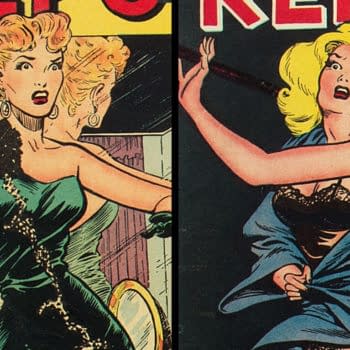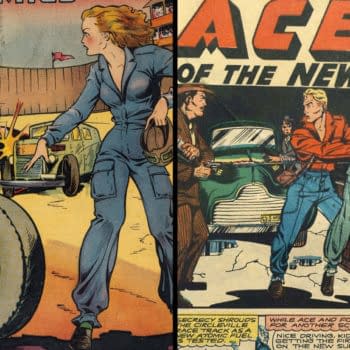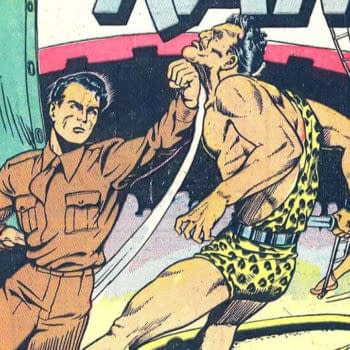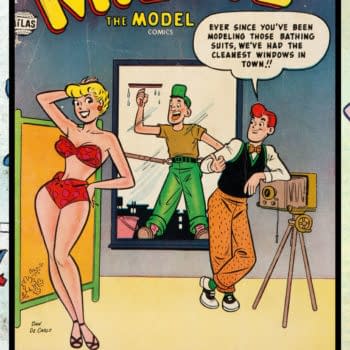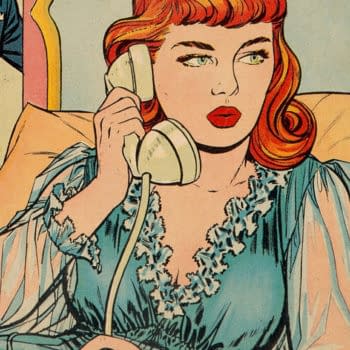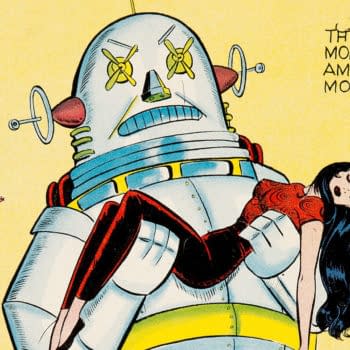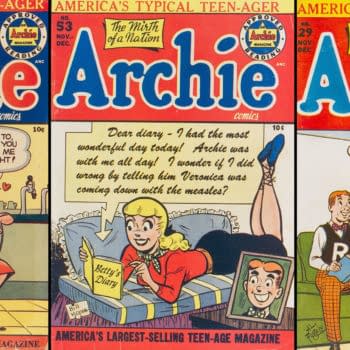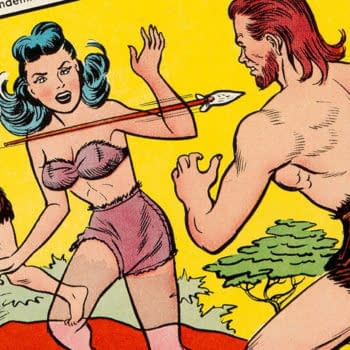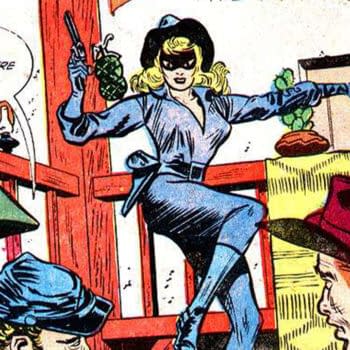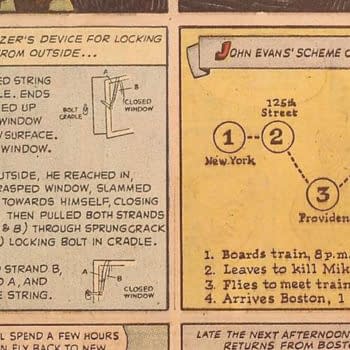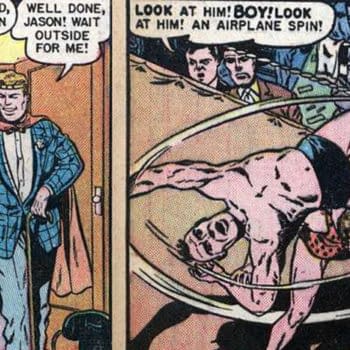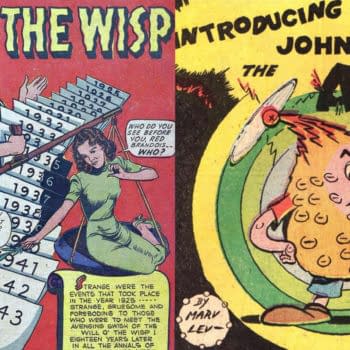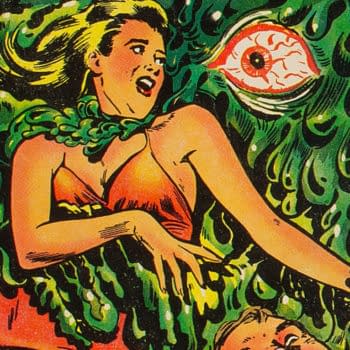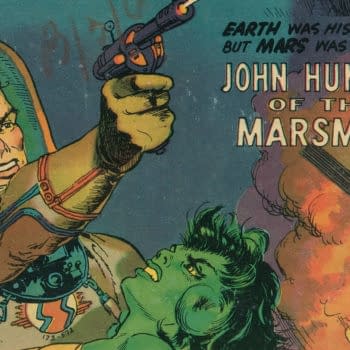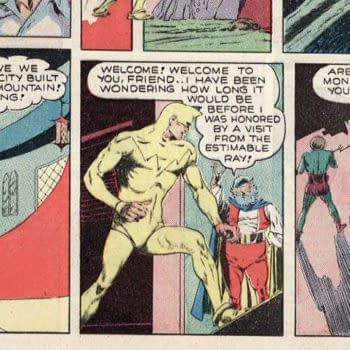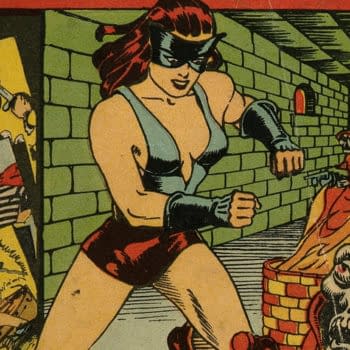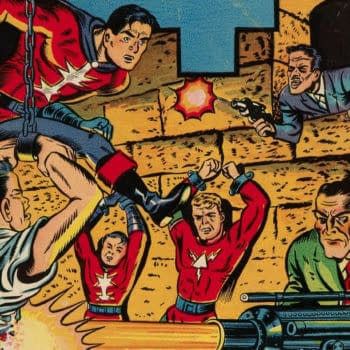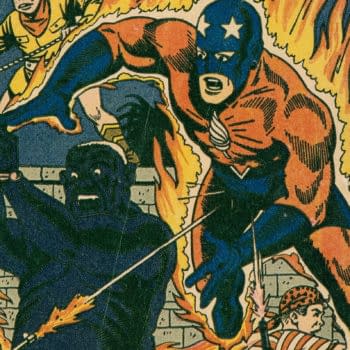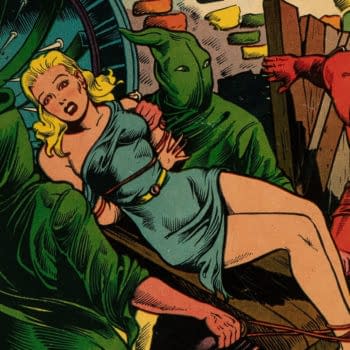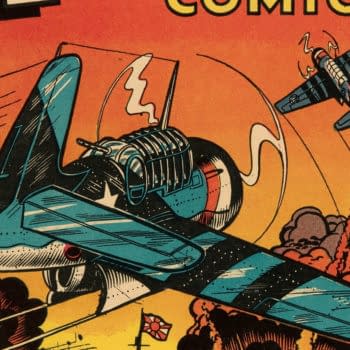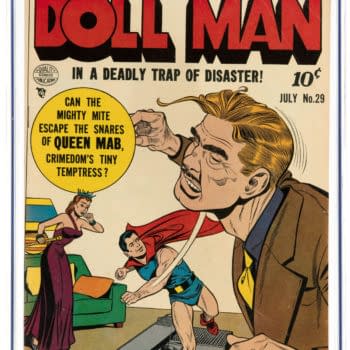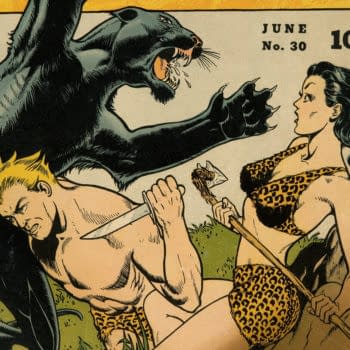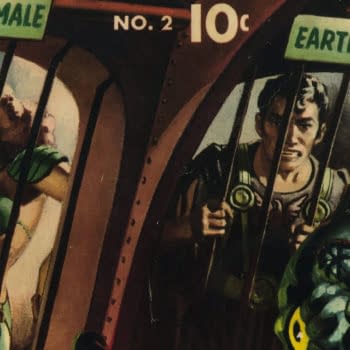Matt Baker made contributions to little-known D.S. Publishing titles Outlaws and Select Detective before the beginning of his St. John era.
Heritage Sponsored Archives
Cover art for Avon's The Saint #4 has been the subject of debate in recent yrs, but style & circumstances still make Matt Baker a possibility
The Golden Age comic book collection that collectors call the "Eldon Pedigree" has become popular with collectors, but there's an interesting twist.
Tiger Girl was created by artist Robert Webb and ran from 1944 to the end of Fiction House in 1954, briefly featuring Matt Baker art.
The Werewolf Hunter feature in Rangers Comics was one of Golden Age artist Lily Renée's early assignments at Fiction House.
Rip Regan, Power Man was an early Fiction House hero, Fight Comics #12 also features the earliest known comic book work by Reed Crandall.
Was comic publisher Archer St. John's approach to Authentic Police Cases influenced by his 1925 abduction by notorious gangster Al Capone?
The St. John title Crime Reporter, best known for its Matt Baker covers, was a reboot of sorts of the Jane Arden, Crime Reporter series.
A few months after beginning to work on Fiction House titles at Iger Studio, Matt Baker did his first covers for Crown Comics.
The obscure Atomic Comics #4 contains an eclectic mix of material including the boxing adventure Kid Kane by Matt Baker.
As Millie the Model Comics progressed through the 1950s, Dan DeCarlo's approach transformed the title, which eventually rebooted Millie's origin twice.
One of comic history's most notorious publishers, Lev Gleason's romance Boy Loves Girl is an overlooked title from the publisher.
The last issue of the original Katy Keene series features a cover inspired by the movie poster for the 1956 film Forbidden Planet.
The now-legendary Archie/Betty/Veronica love triangle was most memorably established on early 1940s Archie Comics covers.
After running in Famous Funnies, Russell Stamm's Invisible Scarlet O'Neil was picked up by Harvey, who gave the character her own title.
The creation of artist Frank Bolle, the masked hero Black Phantom had a classic villain-to-hero story arc in the pages of the Tim Holt comic.
Simple diagrams in Exposed #6 and #7 were used in Fredric Wertham's Seduction of the Innocent as examples of how-to crime instruction.
The Ken Shannon story in Police Comics #104 appears to be influenced by a two Gorgeous George wrestling matches that took place in May 1950.
Short-lived Key Comics from Consolidated Magazine had an eclectic mix of features, including the story of an atom that decided to smash back.
1954 Star Publications Pre-Code Horror release Spook #28 features a lurid cover by L.B. Cole for Jay Disbrow's interior tale "Creeping Death".
Fiction House star artist Maurice Whitman covered Man O' Mars #1, an attempt by the publisher to survive the turmoil of the mid-1950s.
The Ray's early Golden Age adventures in Quality's Smash Comics were beautifully drawn by legendary comic book artist Lou Fine.
The Black Cat made her debut in Pocket Comics #1 by Alfred Harvey and Al Gabriel, and the featured covers by Joe Simon and Bob Powell.
Four Favorites is an underappreciated Ace Periodicals series that ranged from superheroes to horror, and included Harvey Kurtzman's early work.
Marvely/Timely's the Human Torch was not the only Golden Age fire-based hero that legendary artist Alex Schomburg provided covers for.
Captain Flight Comics introduced Red Rocket with this classic cover on issue #5 from Robert Farrell's Four Star Publications in 1944.
Captain Aero Comics featured an eclectic mix of characters including Miss Victory and Alias X, and art by Russ Heath and L.B. Cole.
A copy of Doll Man #29 with the first appearance of Queen Mab from 1950 is up for auction from Heritage Auctions, CGC slabbed at 6.5.
Dan Zolnerowich's spectacular Kaanga action cover on Jungle Comics #30 from Fiction House in 1942 has made it a favorite in the decades since.
Amazing Adventures ran for six issues from Ziff-Davis beginning in 1950, issue #2 features work by Alex Schomburg, Bernard Sachs and more.



